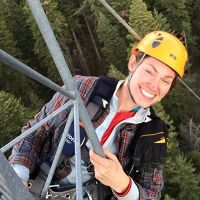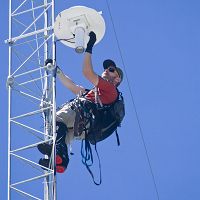CZO E/O Team, 2016
Special issue of The Earth Scientist about the Critical Zone and the US NSF Critical Zone Observatory (CZO) program.
CZO Education/Outreach team (2016)
The Earth Scientist, Volume XXXII, Issue 3, Fall 2016 Cross-CZO National
-
National, INVESTIGATOR, STAFF
-
National, Shale Hills, INVESTIGATOR, STAFF
-
Luquillo, COLLABORATOR
-
Calhoun, INVESTIGATOR
-
Calhoun, INVESTIGATOR
-
Sierra, STAFF
-
Sierra, STAFF
-
Sierra, STAFF
Plain English Summary
Download: The Earth Scientist, Fall 2016 (3.6 MB PDF)
The Earth Scientist is a publication of the National Earth Science Teachers Association (NESTA).
Editor's Corner
Welcome to this special issue of The Earth Scientist sponsored by the Critical Zone Observatory Network!
The Critical Zone (CZ) is the porous, near surface layer that covers all the land on Earth. It extends from the tops of the vegetation to the bottom of the groundwater. The interplay of air, water, rock, soil, and living organisms in the Critical Zone is life-giving, and all of us, and indeed, all terrestrial life depends upon the services the CZ provides. This issue is focused on helping you and your students explore where rock meets life. In doing so, we’ll also help you teach the three-dimensional science of The Next Generation Science Standards (NGSS), as CZ science is very well suited to teaching in ways that resonate with NGSS.
In 2007, the National Science Foundation created the Critical Zone Observatory (CZO) program, to study this essential, life-giving skin of the Earth. The program began with three observatories, and in the ensuing years, the number of observatories has grown to nine. Later, a CZO National Office was established. Research and infrastructure at these nine observatories and the National Office is supported by the NSF Geoscience Directorate, Earth Science Division.
The articles in this issue of The Earth Scientist reflect the symphonic nature of both Critical Zone science and the science of the NGSS. A range of types of scientists – including geolo- gists, ecologists, hydrologists, soil scientists, climatologists, computer scientists and more – are working together to interpret the Critical Zone, how it is changing, and how humans and other organisms depend upon it. Scientists also build their own instruments and use a range of existing technologies from simple to very sophisticated, bringing engineering to bear on the science they do. The interdisciplinary nature of CZ science and the incredible suite of investigations underway support the Next Generation Science Standards’ approach to building deep understanding of concepts, ideas, and practices.
Let the articles in this special issue of The Earth Scientist be the beginning of you and your students’ study of the Critical Zone, and consider how you can extend these innovations to better understand where rock meets life.
- The Critical Zone Observatory Network
Guest Writer of this Editor’s Corner
Don Duggan-Haas
Table of contents
02 From the President
02 From the Executive Director
03 Editor’s Corner
Don Duggan-Haas
04 Monarchs and the Critical Zone: A New Spin on the Study of Butterflies
Kyla Cook, Maggie Augustinsky, Abby Dye, Jenny Flowers, and Steven McGee
07 Critical Zone Science and Observatories and Related Education and Outreach Activities and Resources
Tim White and Don Duggan-Haas
11 Drought in the Critical Zone: Engaging Students in Authentic Inquiry Through Data Jam
Steven McGee and Noelia Báez Rodríguez
14 Critical Zone Science, Interdisciplinarity and the NGSS
Don Duggan-Haas
18 Earth Surface Processes in the Critical Zone: An Introductory Course Designed for Teachers
Tim White
21 International Cooperation in Critical Zone (CZ) Science and Education
Manoj Menon and Tim White
25 Learning from the “Deep Changes in the Land”: The Critical Zone Perspective in Environmental Science Education
Katherine O’Neill and Daniel Richter,
28 Using Scientist-Teacher Partnerships to Create Student- Driven Environmental Field Research Experiences in Primary and Secondary Education Classrooms
Michelle Gilmore, Erin Stacy, Matthew Meadows, and Lynn Sullivan
Citation
CZO Education/Outreach team (2016): Special issue of The Earth Scientist about the Critical Zone and the US NSF Critical Zone Observatory (CZO) program. The Earth Scientist, Volume XXXII, Issue 3, Fall 2016.
 This Paper/Book acknowledges NSF CZO grant support.
This Paper/Book acknowledges NSF CZO grant support.
Explore Further









